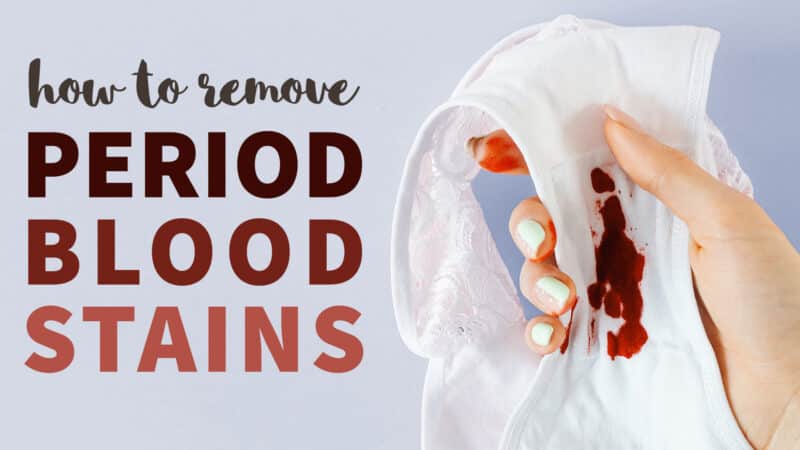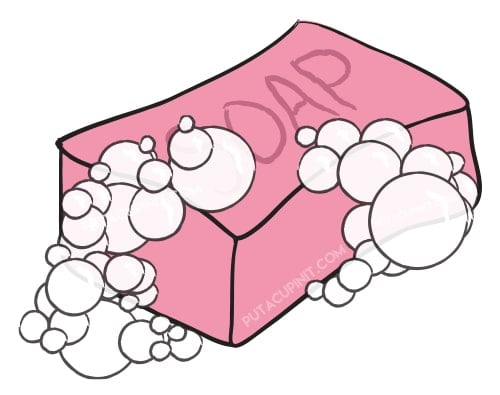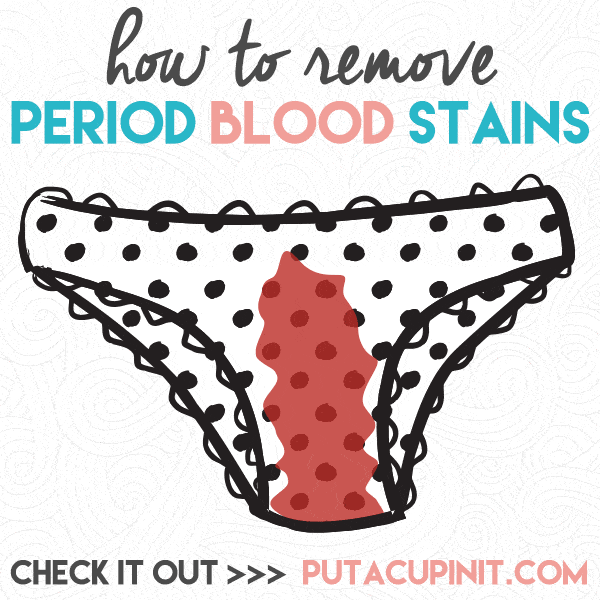
Period blood stains can be a bloody mess, but leaks happens to everyone at one point or another. Thankfully we’ve got some tips and tricks — and almost anything is fixable, though some fabrics may be more difficult to treat than others.
Unless this is your favorite pair of jeans the work may not be worth it, though we do understand how a comfortable pair of cheap underwear (or period panties) can be hard to part with.
If you decide to give it a shot, there are a few different ways to treat blood stains — so don’t give up and don’t be afraid to try different things until you see success.
Fresh Period Blood Stains
The most important part of successfully removing blood stains is to get to them as quickly as possible. If you’re away from home and unable to remove the garment, head to the nearest sink and blot the stain as much as possible with cold water (in a sink if possible) and paper towel to draw out the pigment.
If you are using period underwear or cloth pads, rinse with cold water in a sink until the water runs clear. It’s not always an option to rinse it out immediately if you’re in public, but try to get to it as soon as you are able.
Our #1 Tip
If possible the first step I always suggest is to fully submerge and soak the garment in cold water. Letting it soak overnight (if possible) may be all of the recovery needed. If you find that the stain is more stubborn keep reading.
Some Things Not To Do
When treating fabrics for blood stains there’s some don’ts. They are very important and can mean the difference between getting the stain out and it setting forever.
Wash — but don’t dry with heat!
You can wash the fabric in a washing machine as many times as necessary, but do not put it in the dryer unless the stain is completely gone. The heat from the dryer will set in stains and make them difficult, if not impossible, to remove. Always hang dry the garment and check to see if the stain is still there. Re-treat and re-wash if necessary.
Cold water only
With blood, do not wash in hot water. Use cold water only. When it comes to blood, a protein stain, hot water can also set stains, making them more difficult to remove. This is the opposite of how you treat most stains (where you want to treat it at the same temperature the stain is created at). In this case, do not use heat.
Always use cold water to rinse and wash and hang to dry.
Tackling a Stubborn Stain
As for removing the stain, different types of fabrics will respond differently to treatments and more delicate items like silk or lacy undies will require a little more delicate care, so keep that in mind. You may try a couple of methods to find what works best for your situation. If one doesn’t work, try another.
With all methods, work from the outer edges of the stain to the inside to avoid inadvertently spreading the stain. A very soft bristled old toothbrush or laundry brush can be a big help, just remember to keep the agitation gentle on more delicate fabrics.
Start by hand rinsing in cold water to remove as much blood as possible. If the blood has hardened on, let it soak in cold water for a few hours in a sink or bowl and then rinse well. Repeat if necessary.
Plain Old Table Salt
Salt is great at drawing blood out of fabrics, especially absorbent ones. Sprinkle it on or make a paste and allow it to sit until dry. Scrape off the paste once dry and rinse with cold water. If it helps but the stain persists, repeat until no more blood is absorbing. You can also add table salt to the wash. If you’re a contact lens user and happen to be caught without salt you can also use saline.
Baking Soda
Baking soda and water can be used as a paste and applied to the stain. Like the salt treatment, allow the paste to dry and then rinse with cold water. Repeat if needed.
Soap or Liquid Laundry Detergent
For freshly stained items, you can try dabbing a mild bar soap, stain stick, hand soap, or detergent onto the stain. Rub the fabric together to help work the stain out of the fibers. You may also try allowing the soap sit for 15-30 minutes and then rinsing with cold water.
If you have a stain remover (any kind that you buy in a regular store) that contains enzymes, you can use this on the stain. Allow it to sit for at least 10 minutes before rinsing with cold water. Repeat if necessary.
Avoid using scented soaps on synthetic fabrics or cloth pads. Fragrances absorb into the fabric and may interfere with future absorbency. It can also cause skin sensitivity issues.
Saliva / Spit
Believe it or not, if the stain is very small you can try using spit. Apply to both sides of the stain and let it sit overnight. Rinse well with cold water. This may sound silly but there is a digestive enzyme in spit that does break down blood — but it works slowly. This is ideal for small spots and doesn’t work well on large areas.
Unseasoned Meat Tenderizer
If you have a large area of blood you can try meat tenderizer, which contains an enzyme that breaks down protein. Wet the stain with cold water and sprinkle tenderizer on top. Allow it sit for 15-30 minutes and then rinse with cold water.
Aspirin
Crush two aspirin, dissolve in a cup of warm water, and apply to the affected area. Let it sit for a couple of hours and wash as usual. The salicylic acid will help neutralize the stain. You can also use less water and make a paste which can be applied to the stain.
Oxygen Bleach
Dissolve oxygen bleach (check the manufacturer’s instructions on the package for how much to use) in hot water and then add the garment. Let soak overnight. Wash as usual.
Hydrogen Peroxide
If the above tips don’t cut it, the final thing to try is hydrogen peroxide. Hydrogen peroxide can bleach fabrics and can weaken some types of fabrics so it is a last resort. This method works best on white or light colored fabrics. If you are on a colored fabric, try dabbing some hydrogen peroxide in an inconspicuous area of the fabric first before applying it to the stain. You should see it bubble and fizz when it’s on a blood stained area. Let it sit for about 30 minutes and rinse with cold water. Do not allow it to sit on the fabric for an extended period of time.
Remember
When the majority of the stain seems to be gone, wash your garment in cold water, hang dry, and check the stain. Repeat treatment if needed. If at first you don’t succeed, try try again. And when it comes to reusable period products, sometimes period stains are a normal part of things, but these tips should help.
With stains, sometimes you need to give it a few passes to get everything out — or try a few different methods. Patience and perseverance can really pay off!





4 Responses
So never hot water except with 9xygen bleach?
Oxygen. Sorry about the typo!
Yea a bunch of these methods actually worked 4 me but the best one would definitely have2 b the peroxide
Love this info